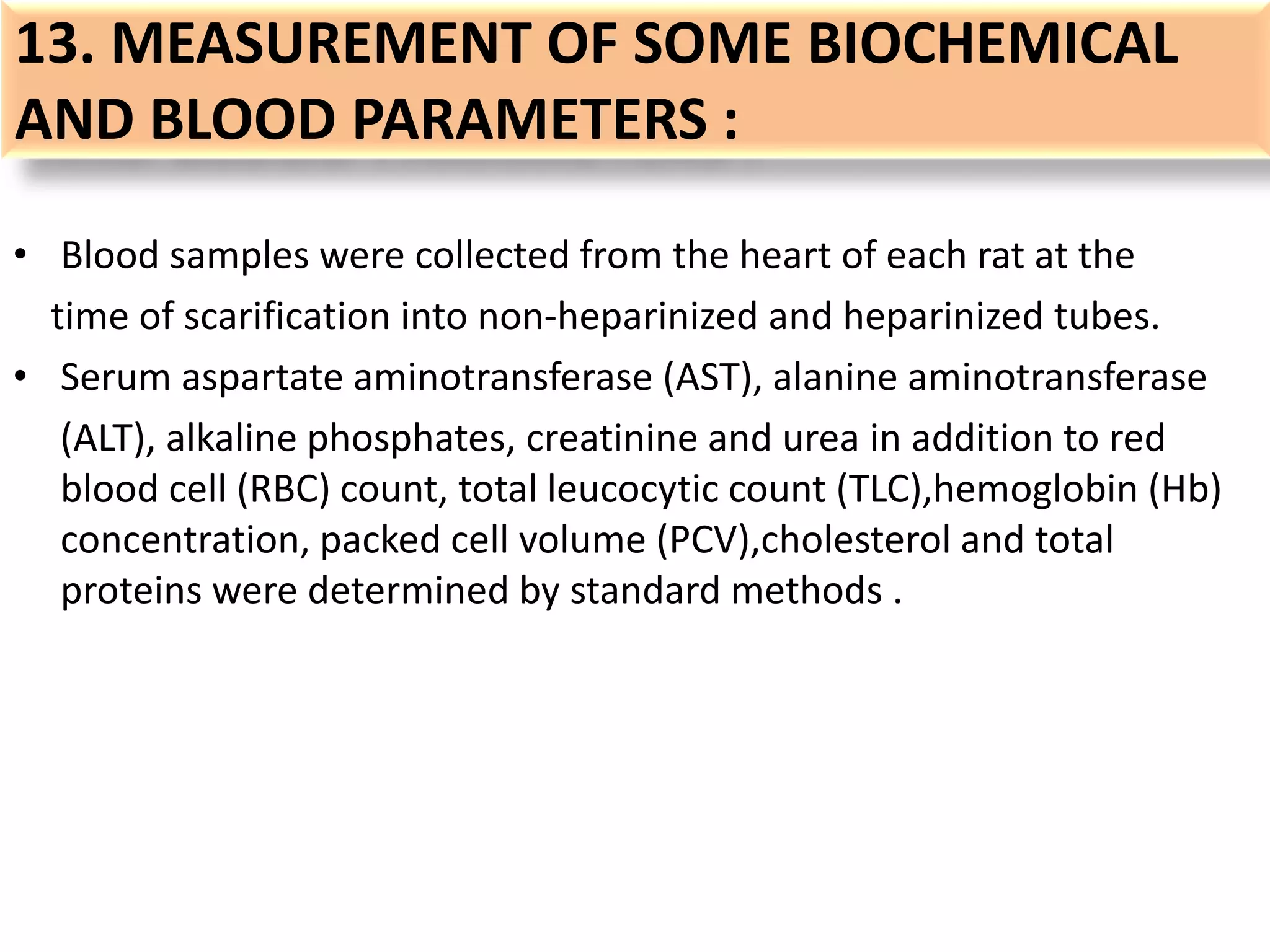This document outlines various methods for evaluating potential antifertility agents, including:
1. Assessing sex hormones, sperm parameters like motility and morphology, and mating/fertility trials.
2. Measuring organ weights, fructose levels, and effects on the estrous cycle, implantation, and gonadotropins.
3. Histological analysis of tissues and measurement of biochemical and hematological parameters.



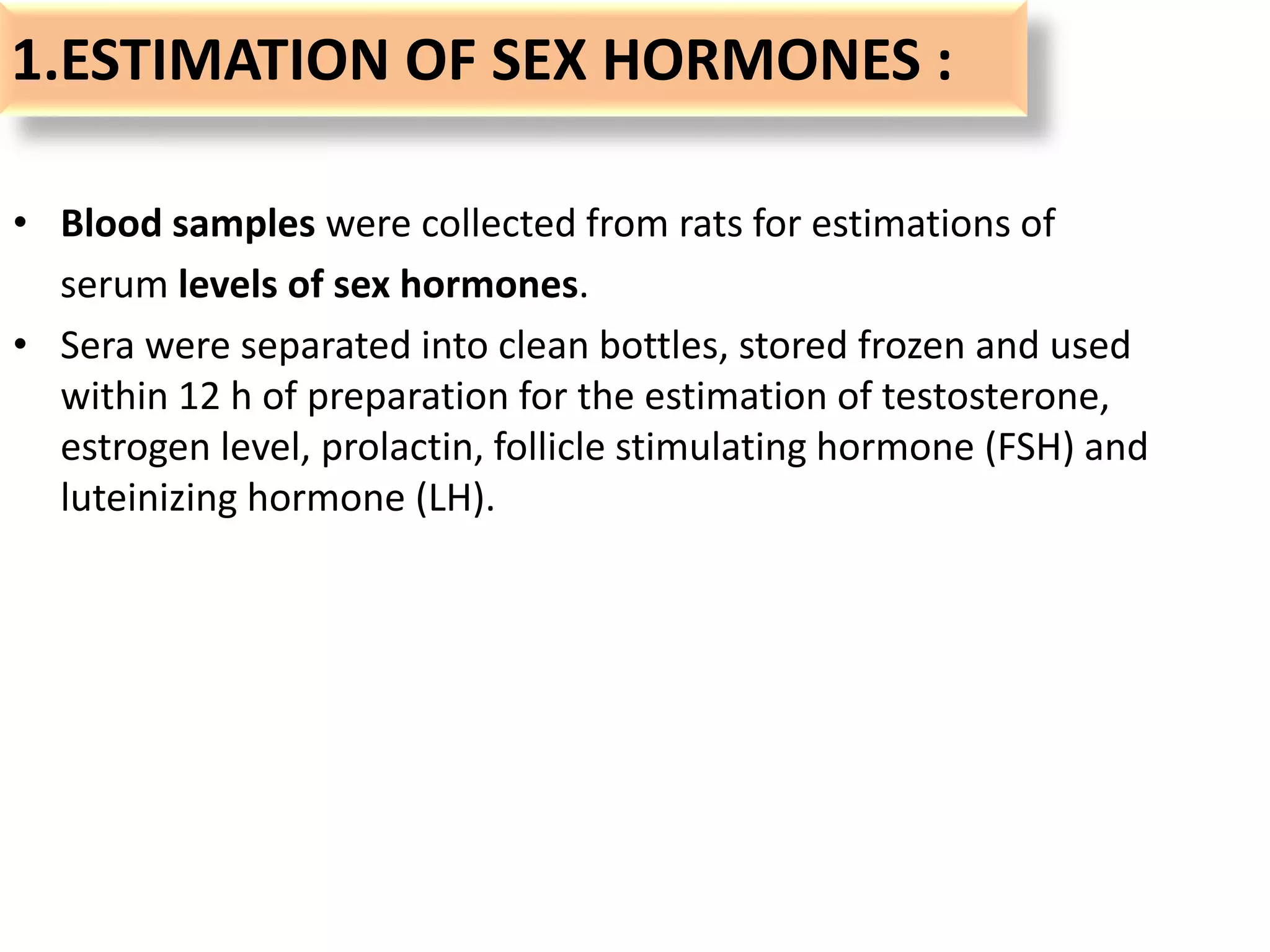


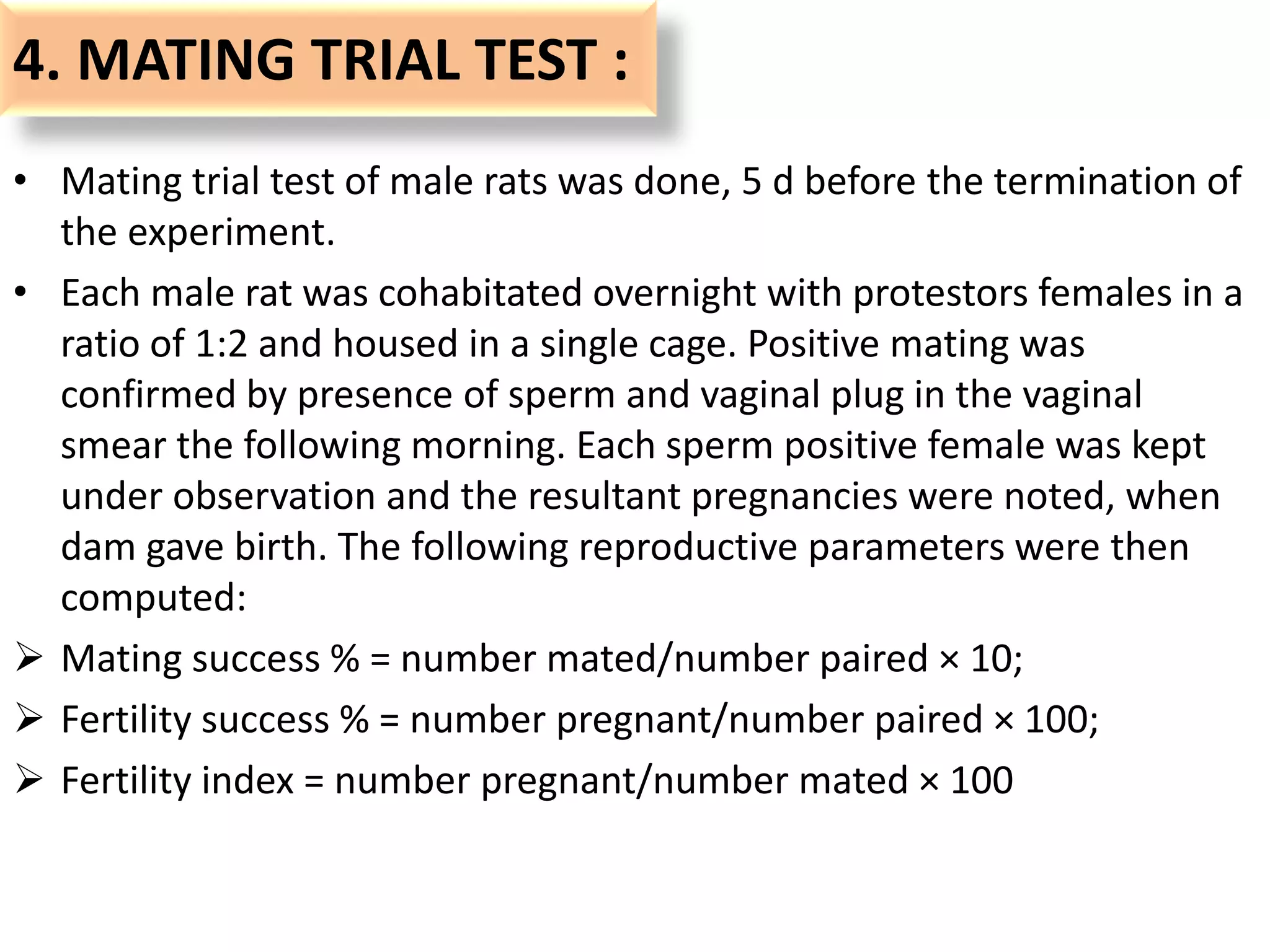

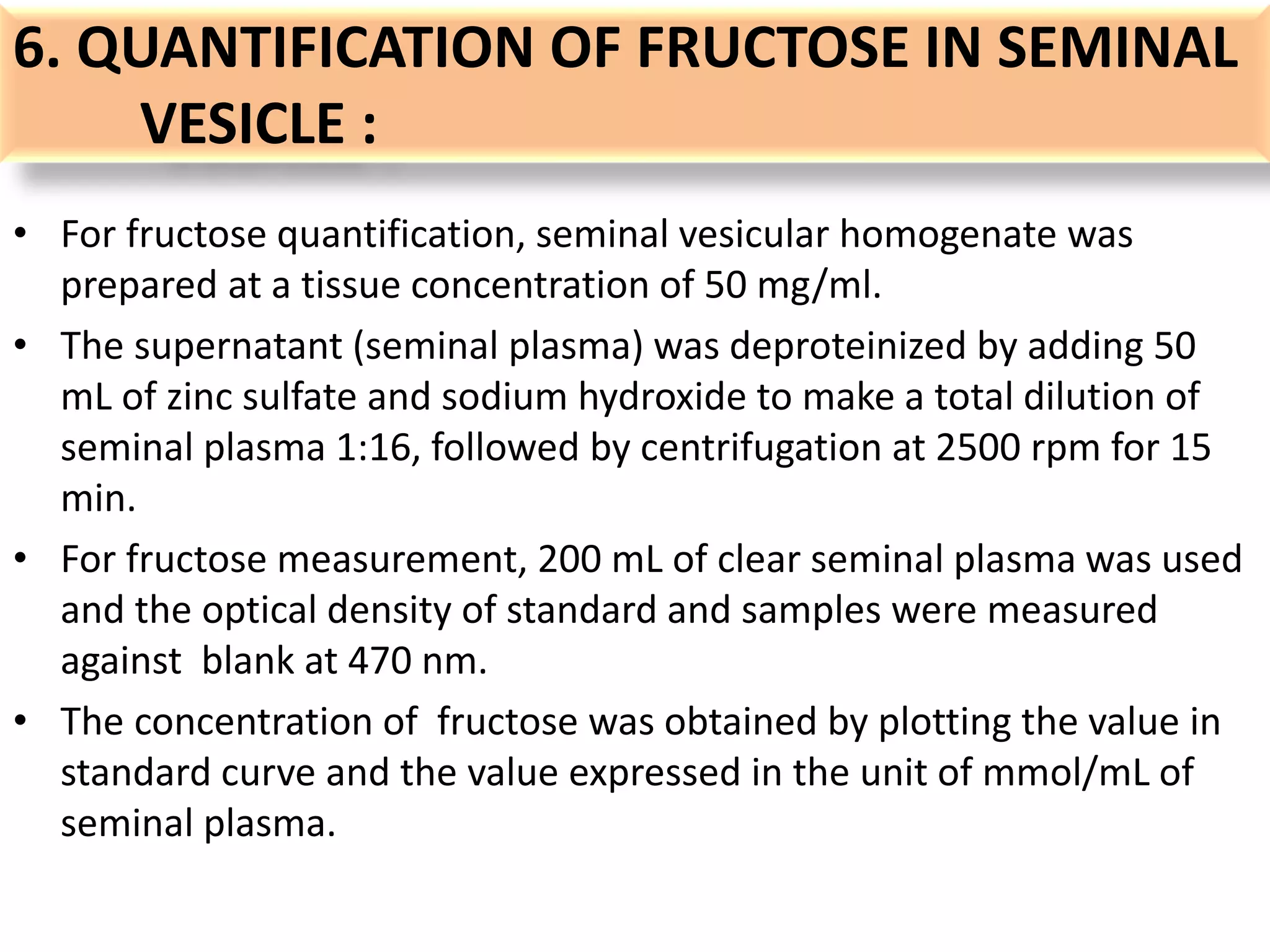

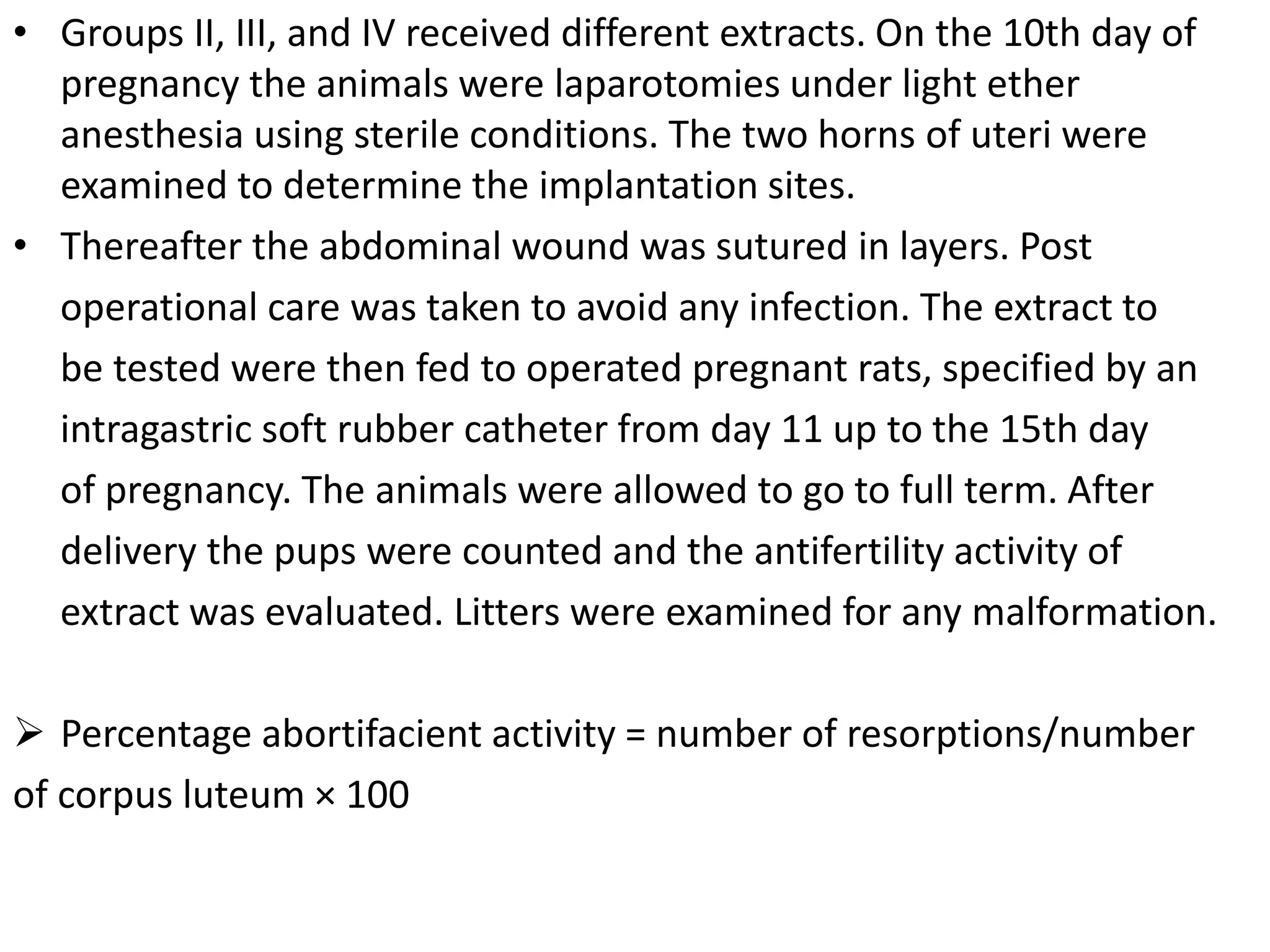
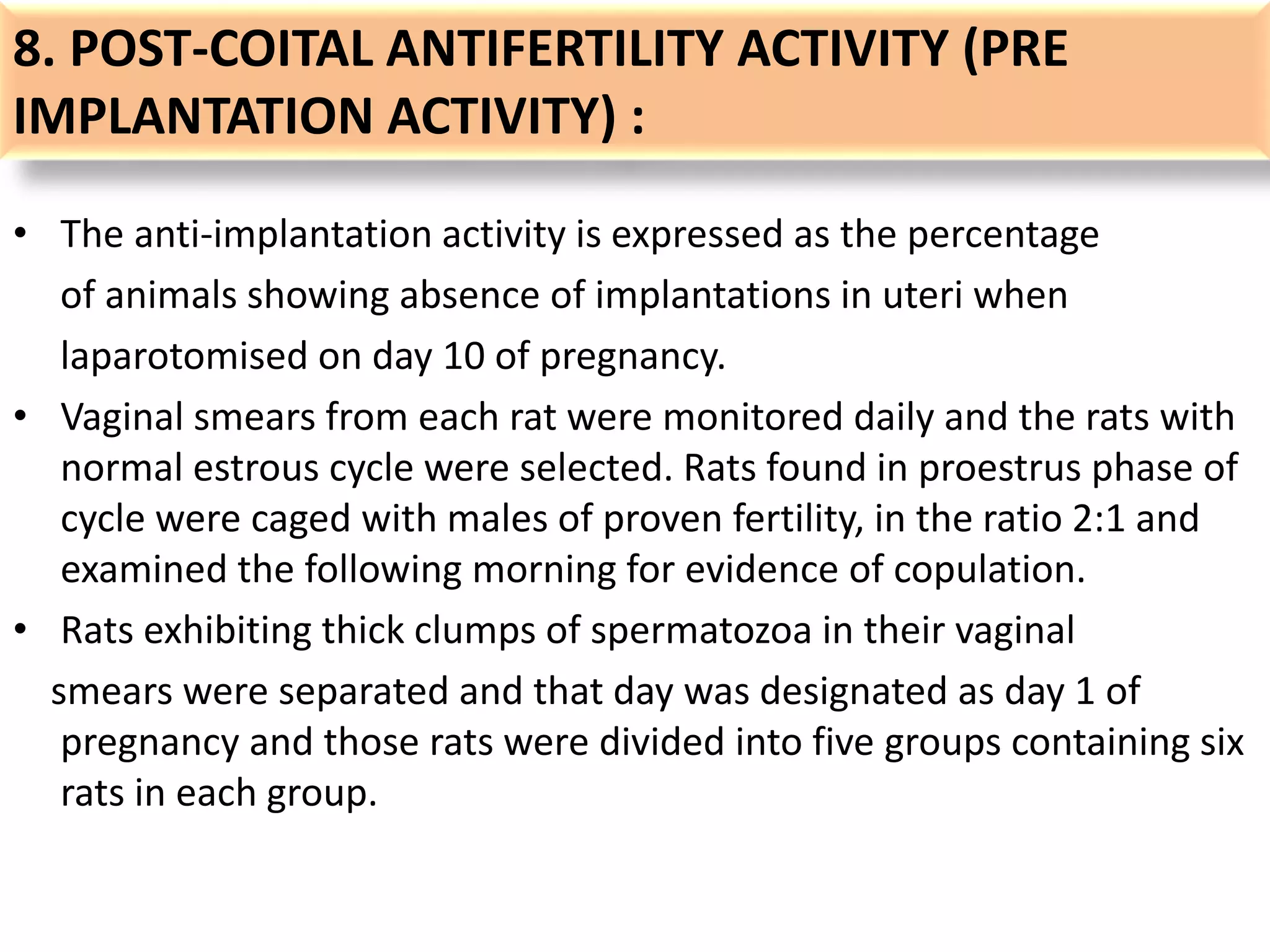
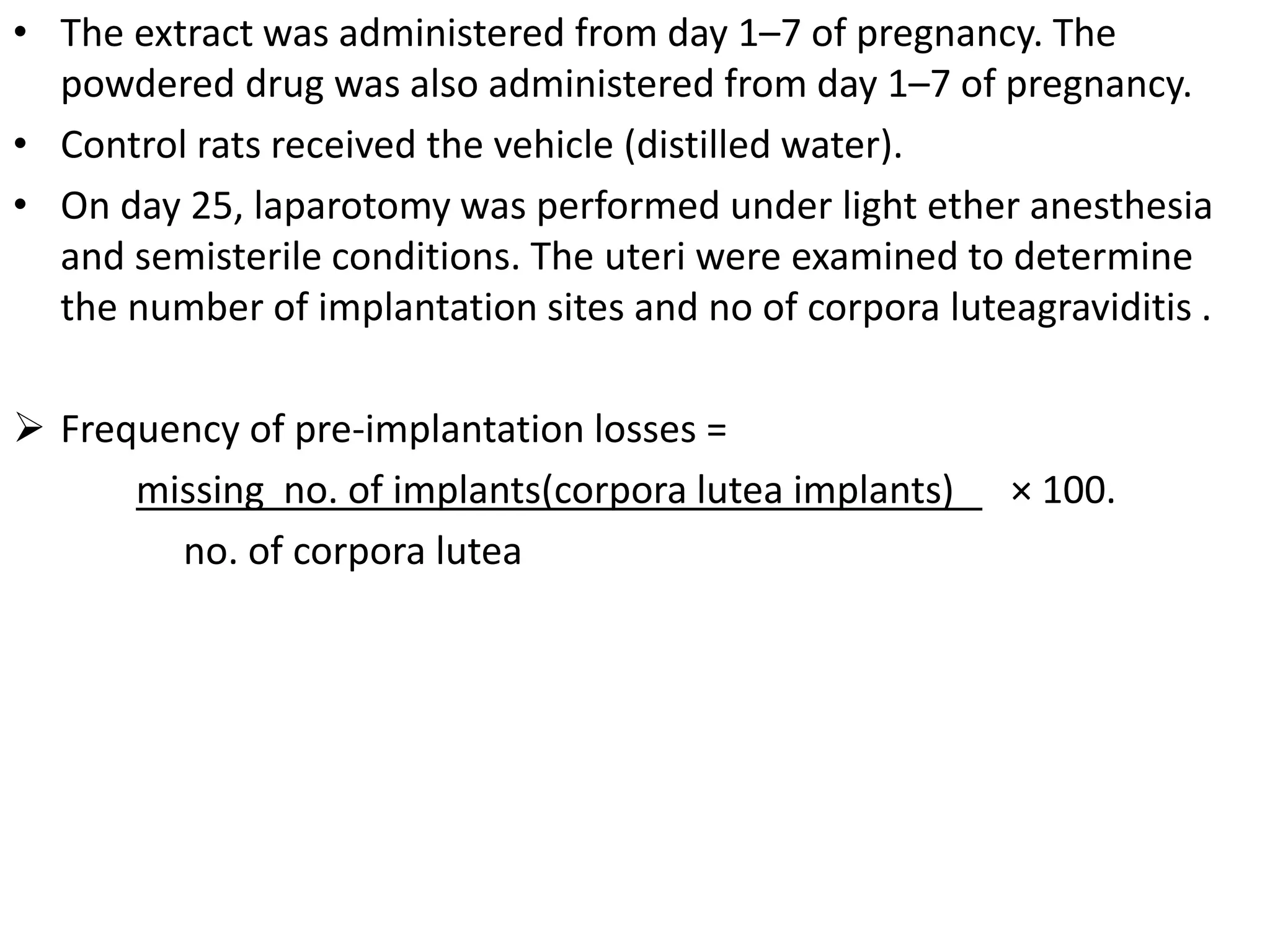
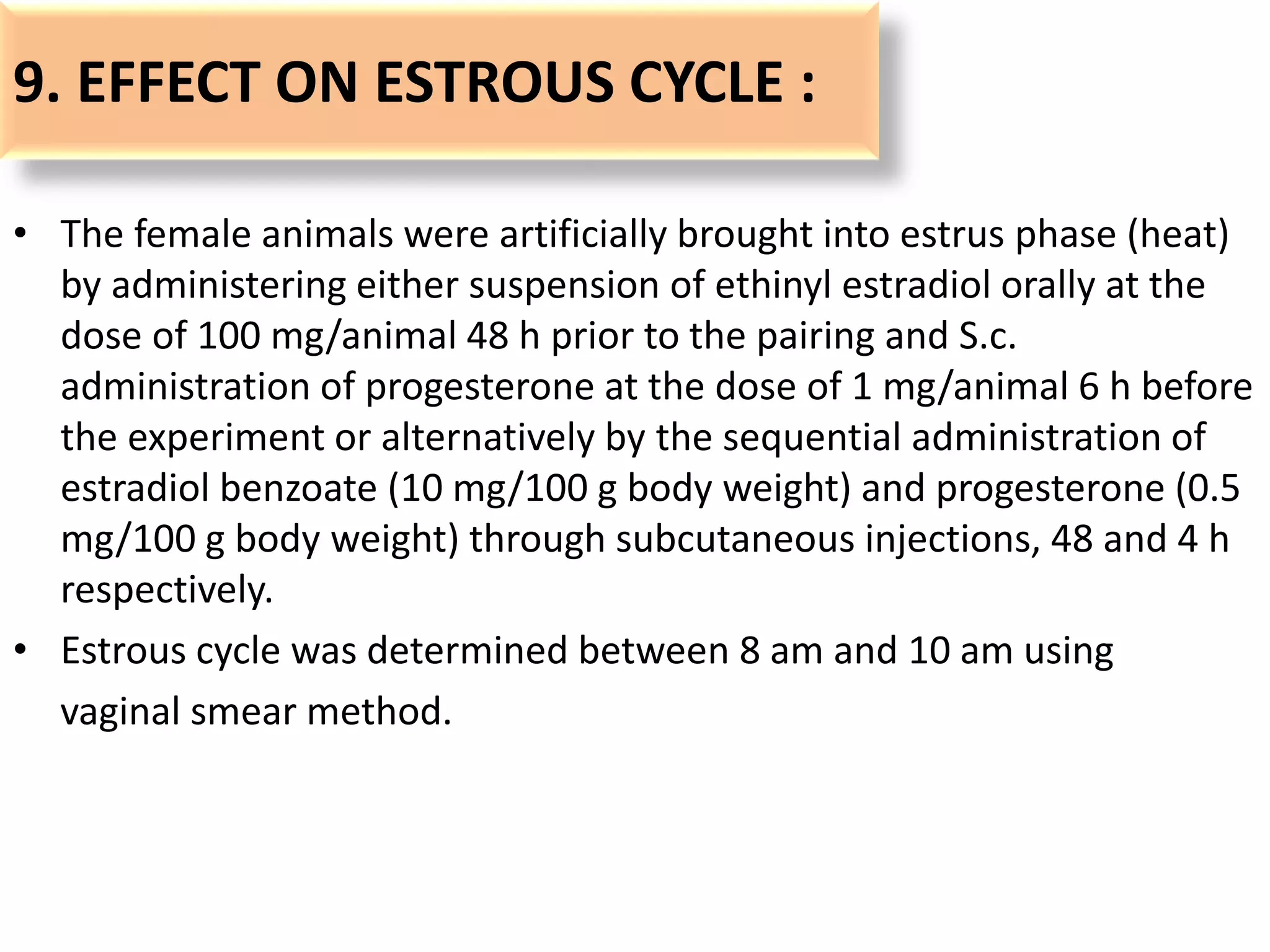
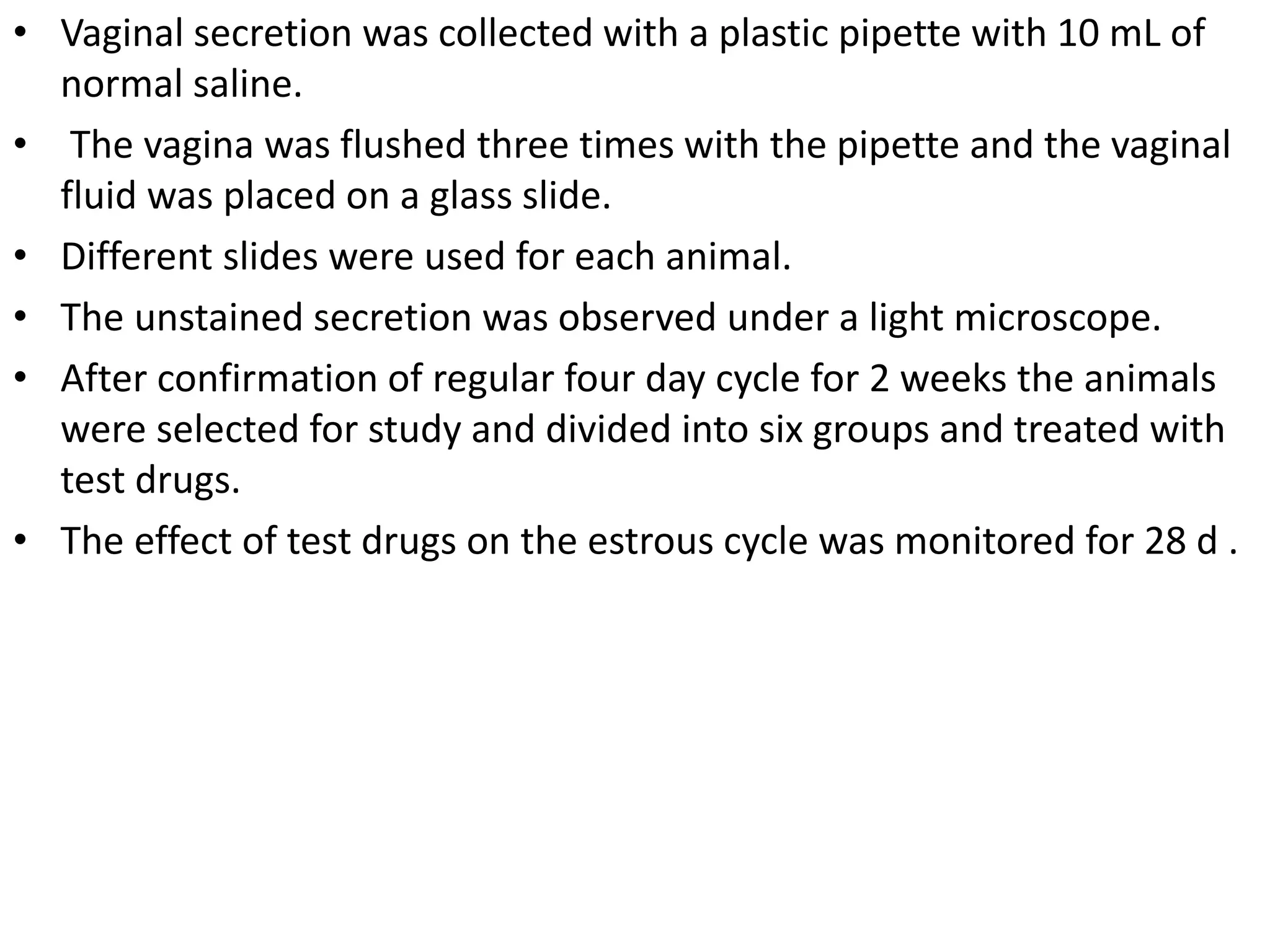

![• The ovaries weight variations prior to and after treatment with
extracts were calculated.
• Percentage inhibition of ovarian weight was calculated using the
following equation:
Percentage inhibition in ovarian weight = [1 − (XE − C)]/E− C × 100.
- Where, C = mean ovarian weight from rats treated with vehicle,
E = estradiol and
XE = the mean ovarian weight of rats treated with extract and
estradiol](https://image.slidesharecdn.com/18komalmps-1evalutionandscreeningofantifertilityagent-171120165351/75/screening-of-anti-fertility-agent-17-2048.jpg)


